Recognizing Indiviudal Elephants
To study social organization or keep track of the demography of a population, one needs to be able to recognize inidvidual elephants. Only this way you can follow an elephant over a longer perioid of time, as elephants live up to 30 years.
It is actually not hard to recognize individual elephants. Have a close look at their ears, tail and look out for special marks like lumps.
Ears
Side folds
The side of the ear can be folded in (towards the elephant) or out. Some elephants have no fold at all. Note that the left and right ear might be folded differently.
Top folds
The top of the ear can be folded in or out. Again, some elephants have no fold at all. The top and side fold don’t have to be folded the same way.
Tears and holes
The ears can have tears or holes which are quite unique and easy to recognize.
Depigmentation / ear lobes
Ears can have characteristic depigmentations. However, after a “dust bath” those might be hard to see. The ear lobes are also differently shaped.
Tail
Tail tuft
The tail tuft has hair on two sides. Which side has more hair or longer hair is variable, which makes it a good feature to identify an elephant.
Tail length
The length of the tail is variable. Sometimes a part of it is even missing.
Special marks
Tusks
Only about 7% of Sri Lanka’s males have tusks. The tusks have different shapes and lengths, which makes it very easy to distinguish the tuskers.
Old wounds
Old gun shot wounds or marks from snares can also be used to identify elephants. One has to be careful with fresh wounds because they might heal completely, making them disappear again.
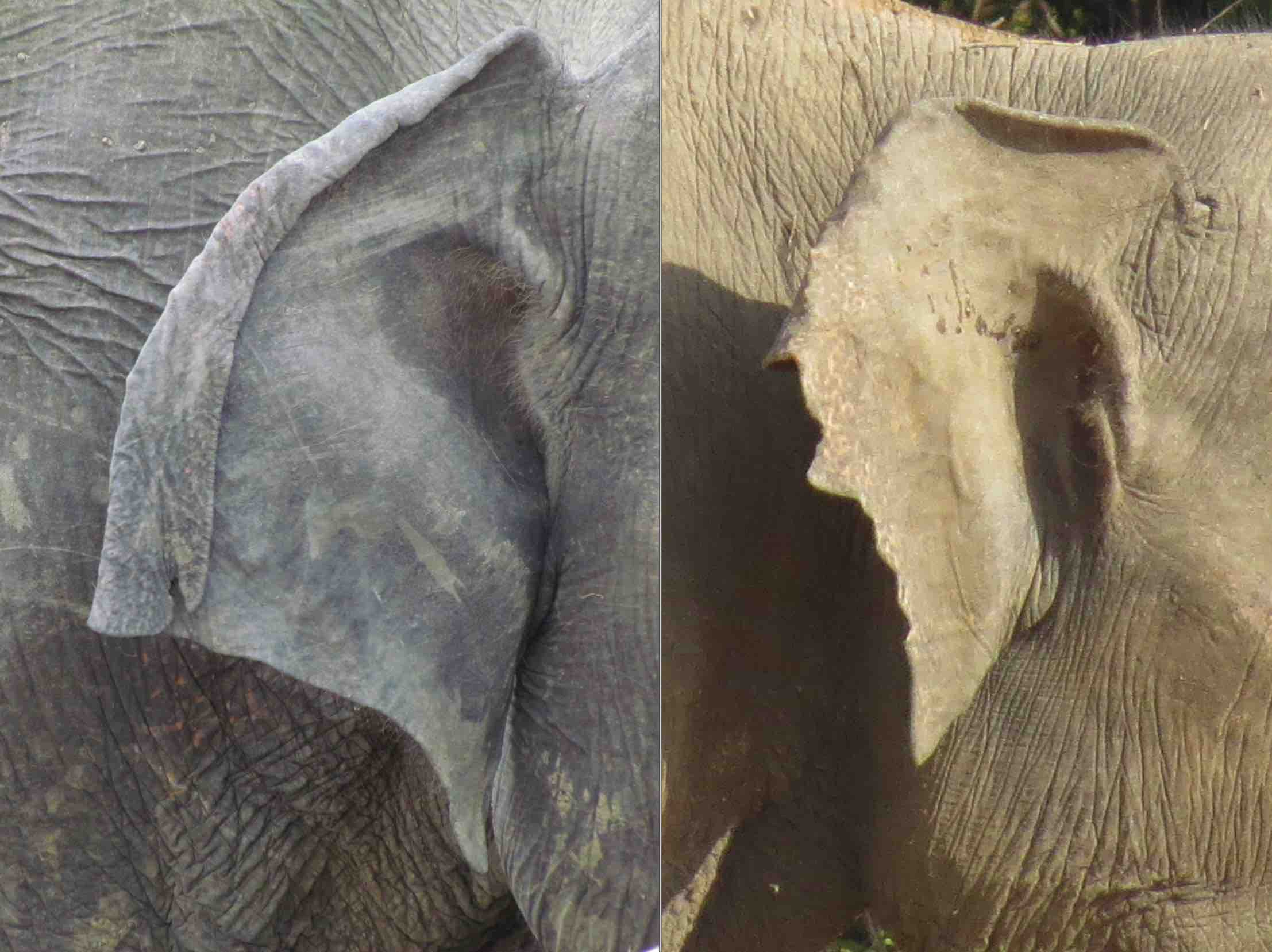
Left: Side and top of ear are folded out
Right: Side fold in and not much of a top fold
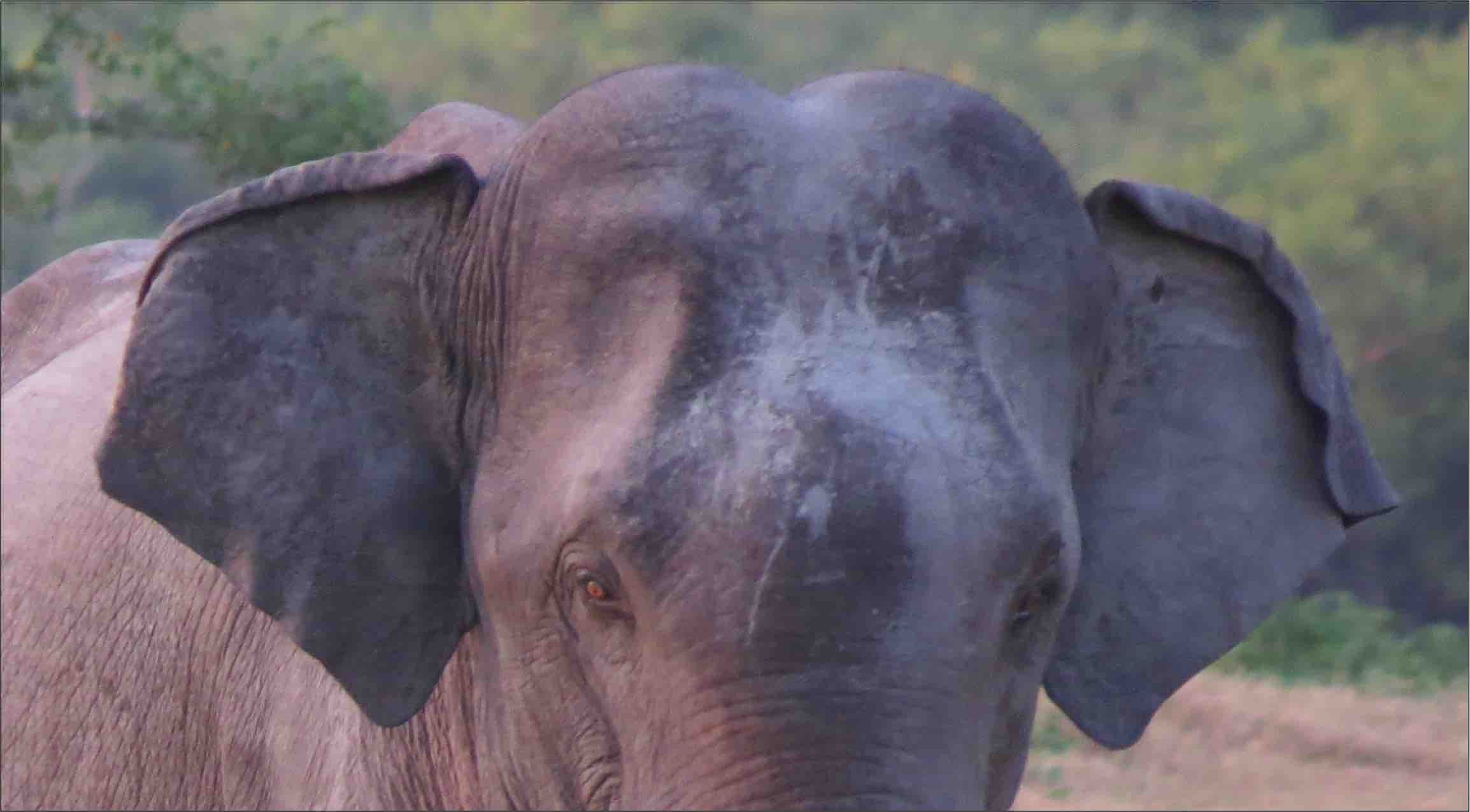
Left and right ear folded differently
cEar with hole
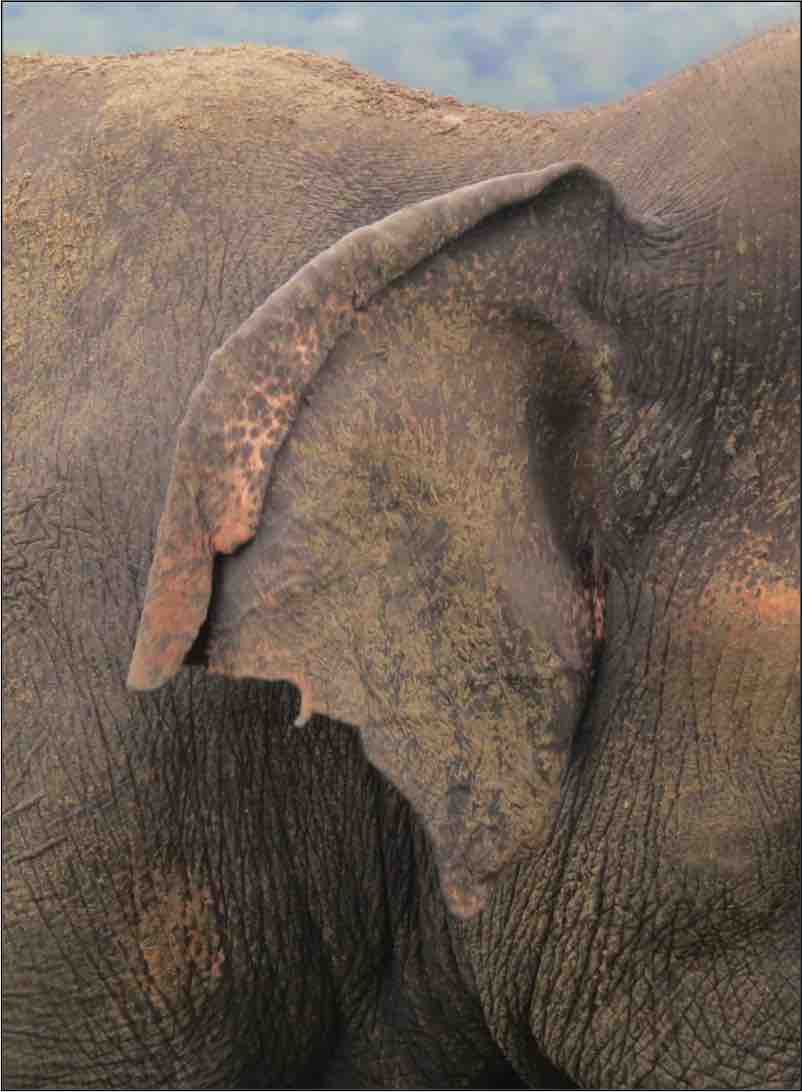
Ear with tear
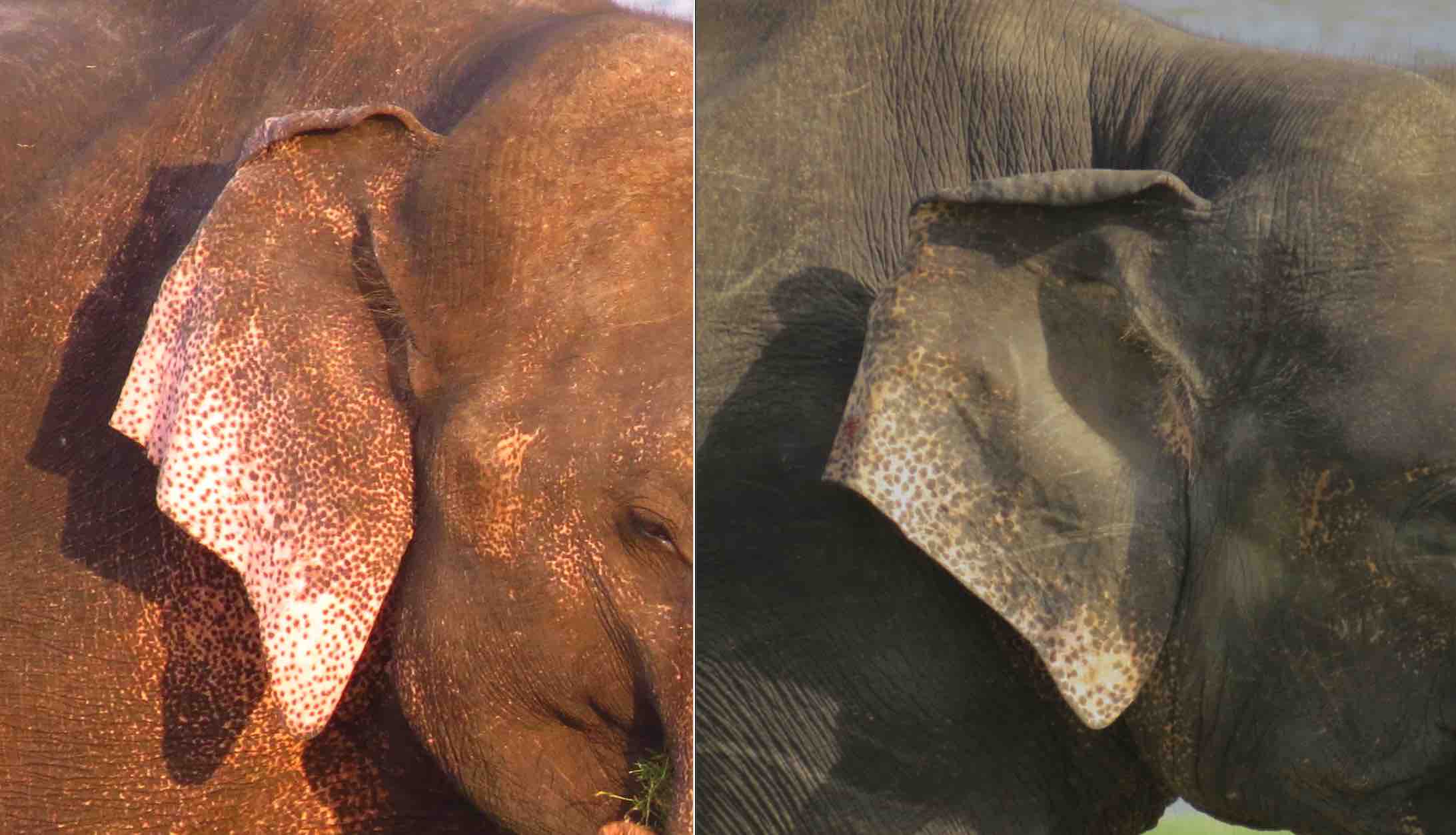
Ears with differently shaped lobes
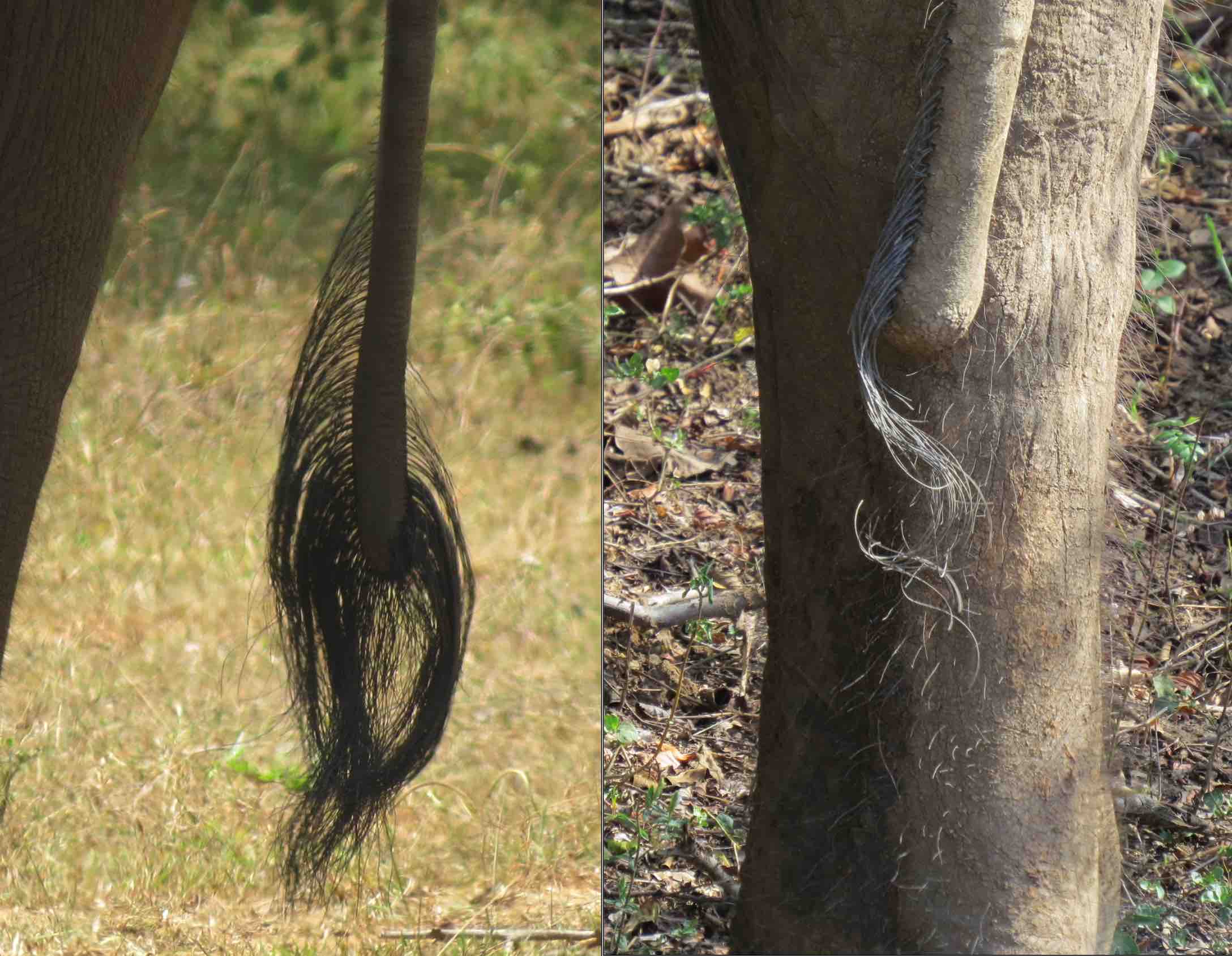
Left: Tail tuft has more hair inside
Right: Tail tuft has hair on only one side>
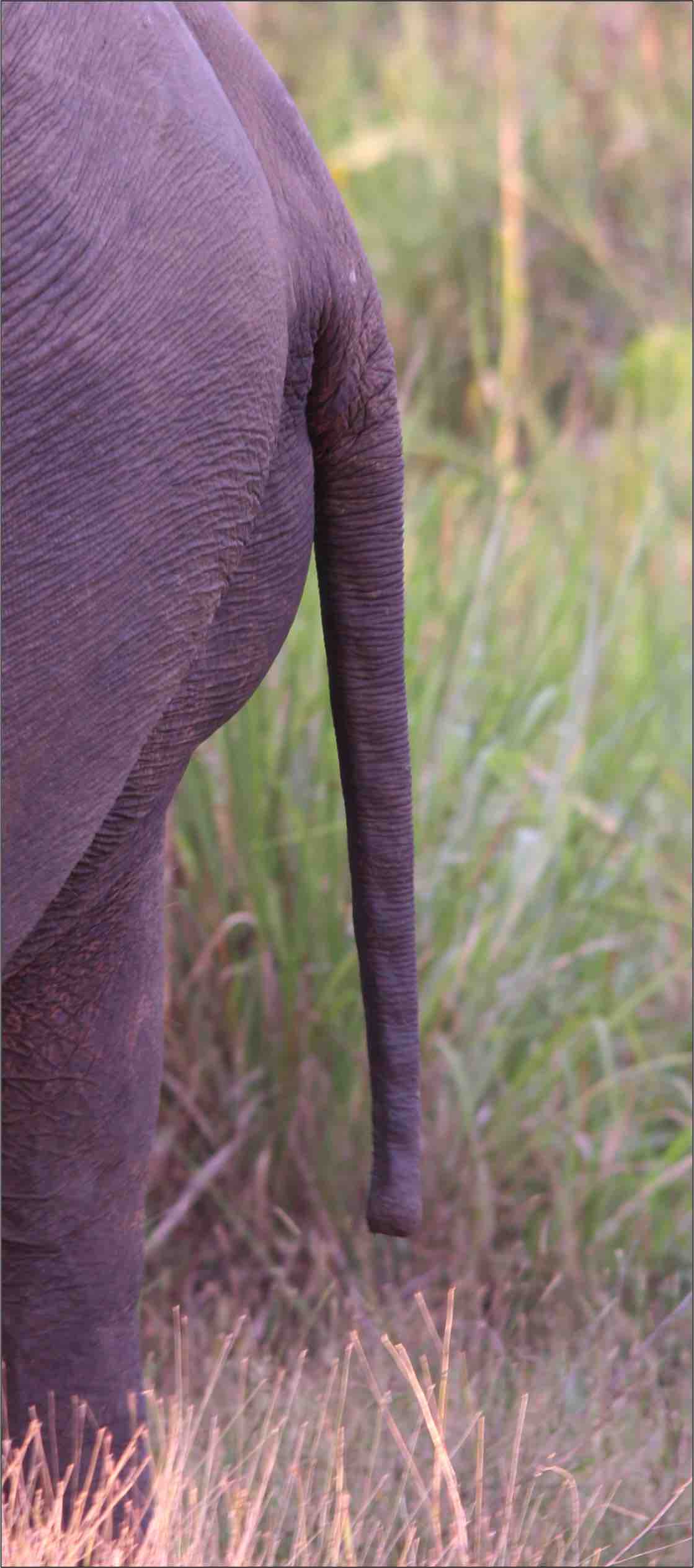
Part of tail is missing
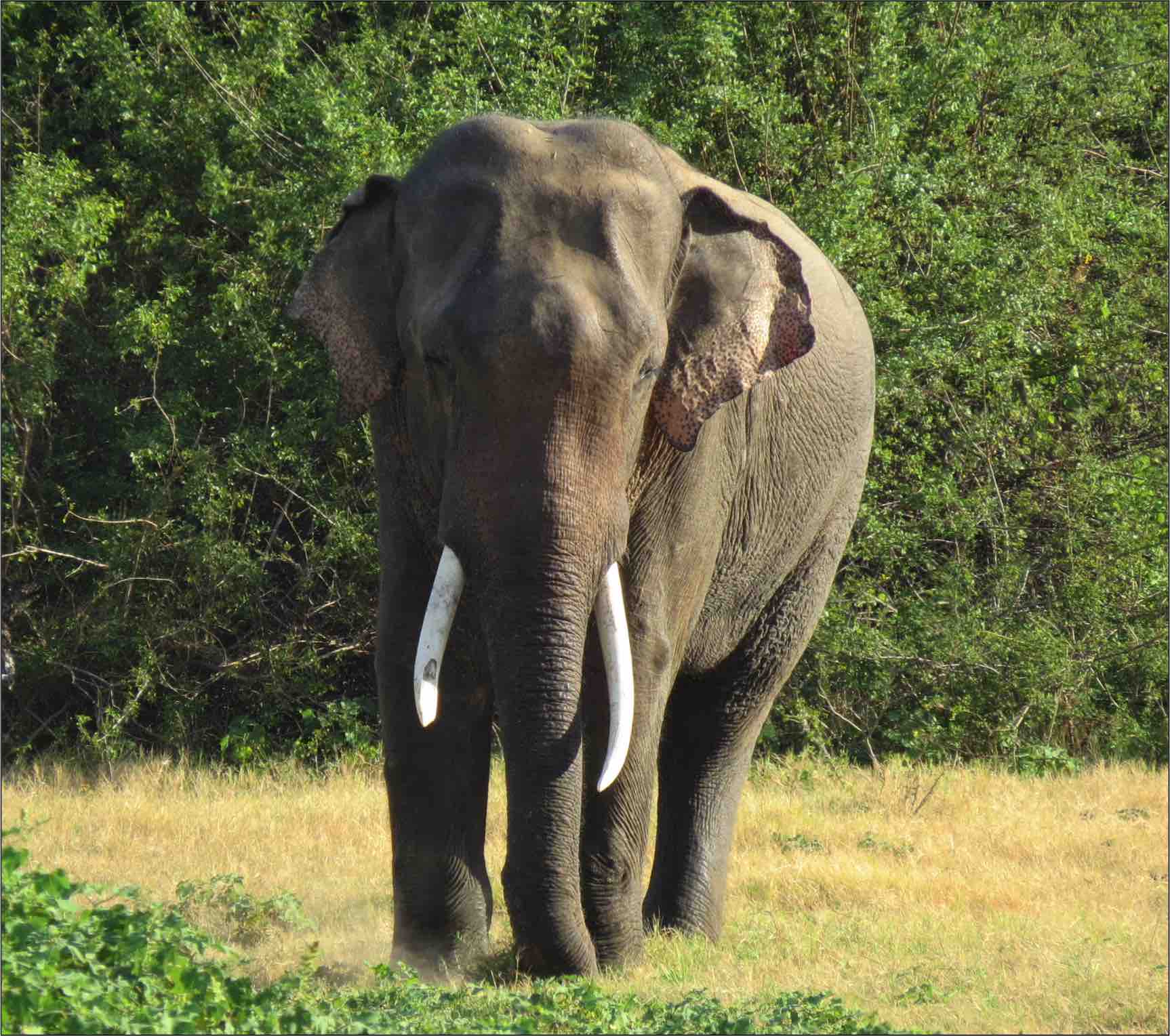
Tusker
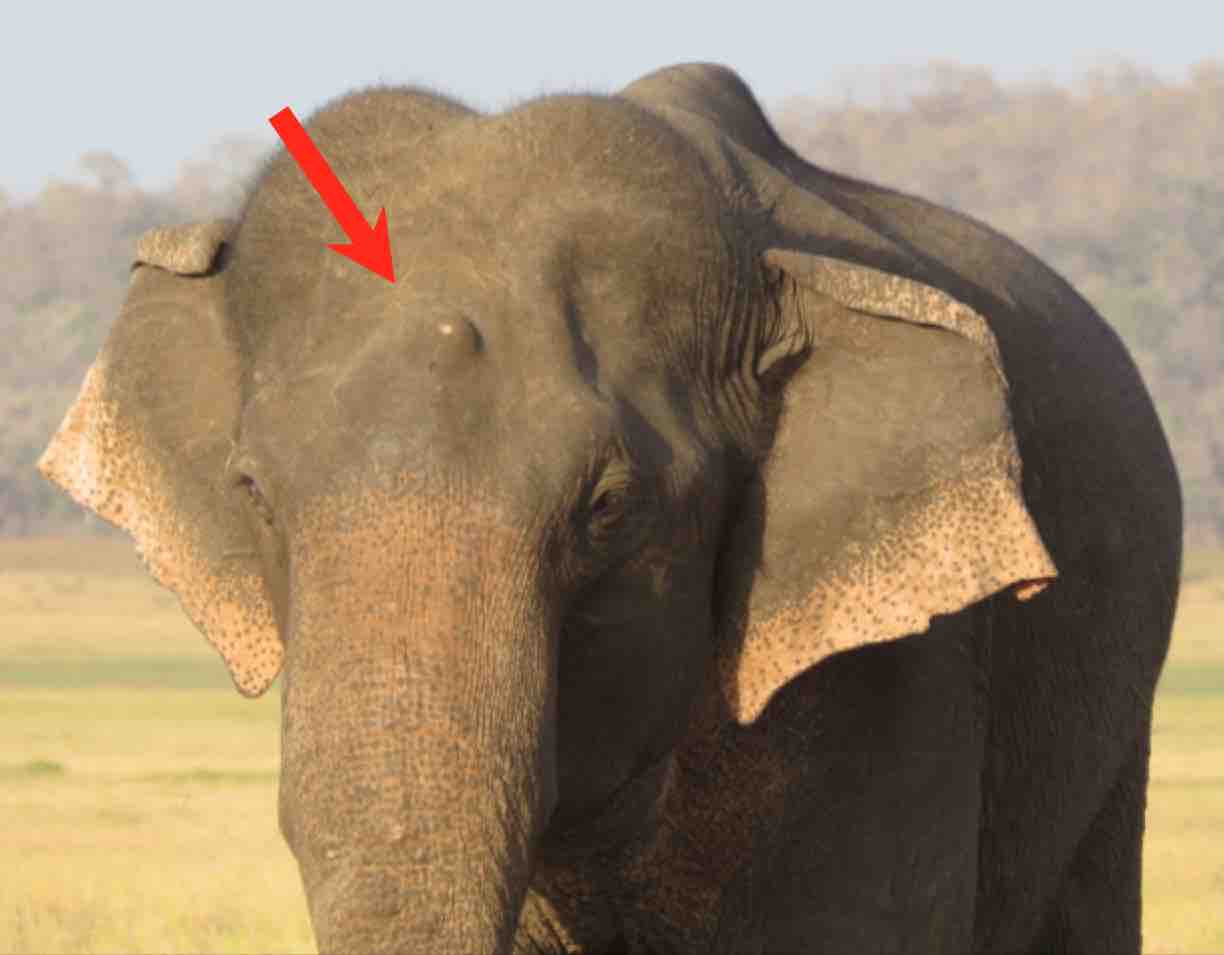
Lump on the forehead
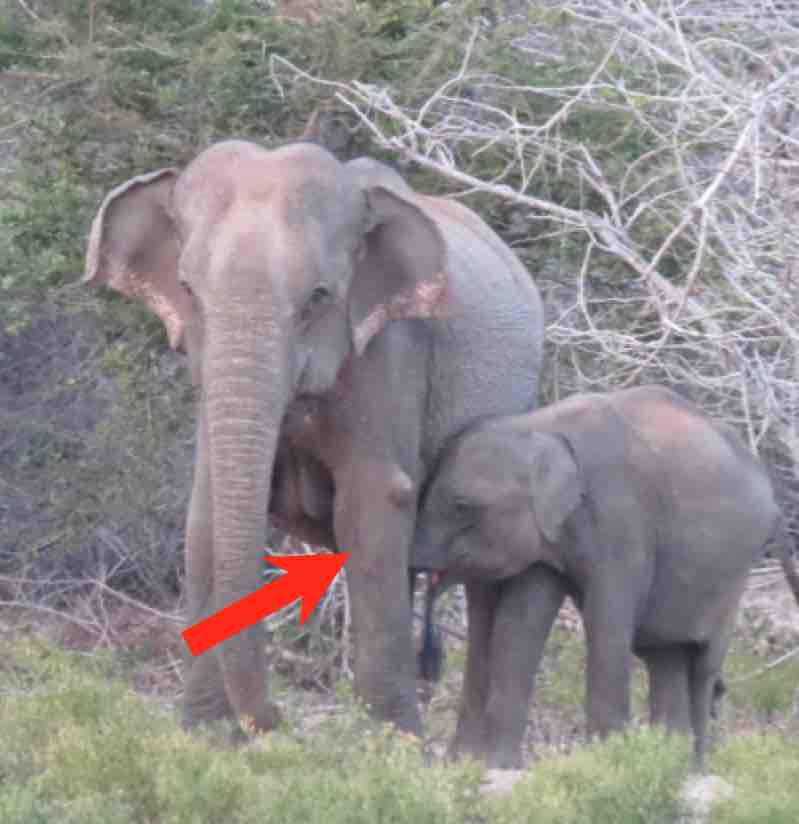
Lump on the leg